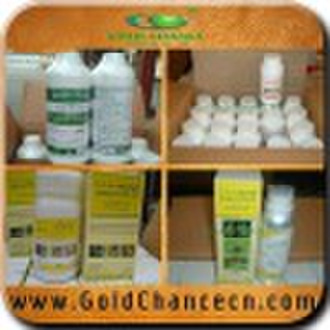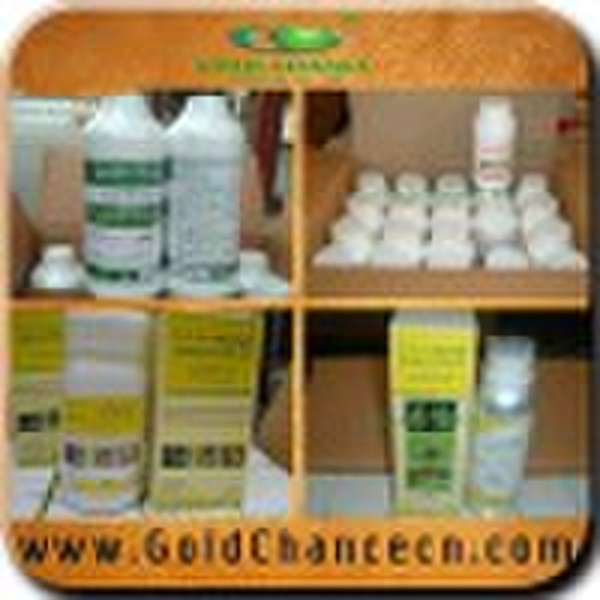Catalog
-
Catalog
- Agriculture
- Apparel
- Automobiles & Motorcycles
- Beauty & Personal Care
- Business Services
- Chemicals
- Construction & Real Estate
- Consumer Electronics
- Electrical Equipment & Supplies
- Electronic Components & Supplies
- Energy
- Environment
- Excess Inventory
- Fashion Accessories
- Food & Beverage
- Furniture
- Gifts & Crafts
- Hardware
- Health & Medical
- Home & Garden
- Home Appliances
- Lights & Lighting
- Luggage, Bags & Cases
- Machinery, Hardware & Tools
- Measurement & Analysis Instruments
- Mechanical Parts & Fabrication Services
- Minerals & Metallurgy
- Office & School Supplies
- Packaging & Printing
- Rubber & Plastics
- Security & Protection
- Service Equipment
- Shoes & Accessories
- Sports & Entertainment
- Telecommunications
- Textiles & Leather Products
- Timepieces, Jewelry, Eyewear
- Tools
- Toys & Hobbies
- Transportation
Filters
Search
Abamectin 1.8% EC, 95%TECH

Diego Ge
Contact person
Basic Information
| Classification | Insecticide |
|---|---|
| CAS No. | 71751-41-2 |
| Place of Origin | Jiangsu China (Mainland) |
| Purity | 95% |
| Brand Name | Goldchance |
| Model Number | Abamectin |
| State | Liquid |
Abamectin Common name: Abamectin Chemical name: 5-O-demethylavermectin A1a (i) mixture with 5-O-demethyl-25-de (1-methylpropyl)-25-(1-methylethyl) avermectin A1a (ii) Chemical class: Avermectin Cas No.: 71751-41-2(abamectin), 65195-55-3(i), 65195-56-4(ii) Properties: Form (appearance): A mixture containing > 80% avermectin B1a (i) and < 20% avermectin B1b (ii). Colourless to pale yellow crystals. M.P.: 161.8-169.4 (decomp). V.P.: <3.7×10-3 mPa (25). S.G.: 1.18 (22). In water 7-10 μg/l (20). In toluene 350, acetone 100, isopropanol 70, chloroform 25, ethanol 20, methanol 19.5, n-butanol 10, cyclohexane 6 (all in g/l, 21). Stable to hydrolysis in aqueous solutions at pH 5, 7, and 9 (25). Sensitive to stronger acid and base. U.v. irradiation causes conversion first to the 8,9-Z-isomer, then to unidentified decomposition products. Toxicity: Acute oral LD50 for rats 10, mice 13.6 mg/kg (in sesame oil). Acute percutaneous LD50 for rabbits >2000 mg/kg. Mild eye irritant; non-irritating to skin (rabbits). Ecotoxocology: Acute oral LD50 for mallard ducks 84.6, bobwhite quail >2000 mg/kg. LC50 (96 h) for rainbow trout 3.2, bluegill sunfish 9.6 μg/l. Daphnia EC50 (48 h) 0.34 ppb. Algae LC50 >100 mg/l. LC50 (96 h) for pink shrimp (Panaeus duorarum) 1.6, blue crab (Callinectes sapidus) 153 ppb. Worms LC50 (28 d) for earthworms 28 mg/kg soil. Toxic to bees. Environmental fate: Degradation/metabolism in each of three different plants is similar and occurs predominantly by photolysis on the plant surfaces. The definition of the residues is thus expressed as the combined residues of avermectin B1 and its 8,9-Z avermectin B1 photoisomer. Rapidly eliminated (80-100% in 96 h), mainly via faeces; urinary excretion was 0.5-1.4%. Binds tightly to soil, with rapid degradation by soil micro-organisms. No bioaccumulation. Mode of action: Acontact and stomach action. Has limited plant systemic activity, but exhibits translaminar movement. Usage: Control of motile stage of mites, leaf miners, suckers, bettles, ect. On ornamentals, cotton, citrus fruit, pome fruit, nut crops, vegetables, potaoes, and other crops. Abamectin 1.8EC Agricultural insecticide Appearance:Light yellow transparent liquid A.I content: 1.8±0.2 % pH value: 4-7 Water: 0.3max
Delivery terms and packaging
Packaging Detail: As per customer's request. Delivery Detail: Two weeks upon receiving the order
Port: Shanghai
Payment term
Letter of credit
Telegraphic transfer
-
Payment Methods
We accept:









